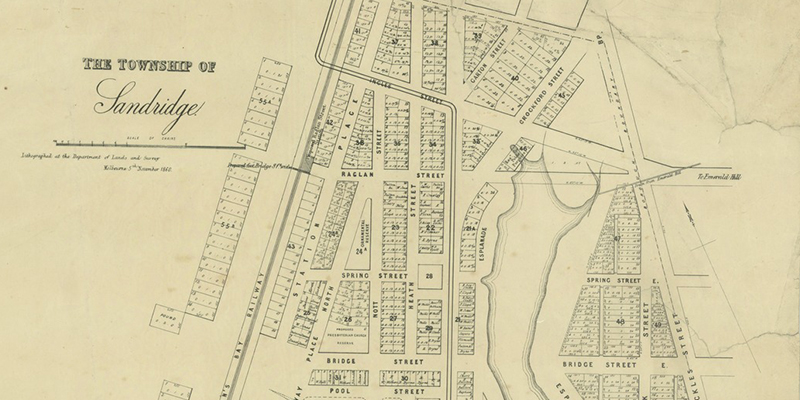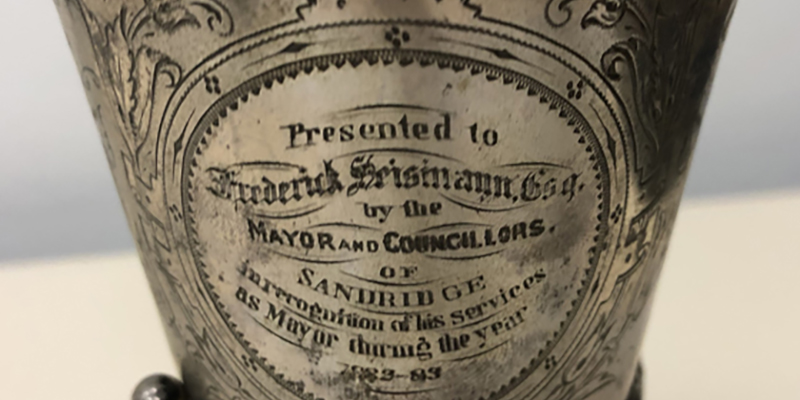Housing prisoners
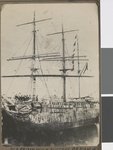
The Victorian government announced this week that it will be buying more shipping containers to house the growing prison population. The news prompted this post. To get your bearings for this story, place yourself on the beach between the Life Saving Victoria headquarters and the Sandridge Life Saving Club.
In the 1850’s, clearly visible between Sandridge and Williamstown would have been prison hulks moored in Hobsons Bay. Allan Meiers imagines this being the daily experience of his forebears in Fisher Folk of Fishermans Bend.1
Consider this – in December 1851, there there were only 29 people in prison in Victoria. Two years later there were 955.
In response to the shortage of prison accommodation, the Victorian Government bought ships and converted them into prisons. In 1852 it purchased the ship President and had it fitted out as a floating prison. But the prison population continued to rise, so the following year the government purchased the Deborah, Success and Sacramento for conversion into prison ships, followed by the Lysander in 1854.2
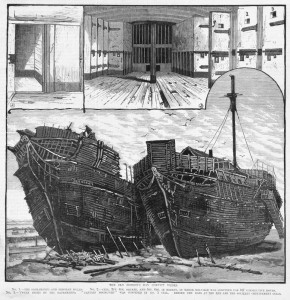
The Success was taken over for this purpose when her crew deserted for the goldfields. The prison hulks were used for some of the toughest criminals in the colony. Conditions for prisoners were extremely harsh. Prisoners might be held in solitary confinement below the waterline. The prisoners were held in chains. They were rowed back and forth to work at Williamstown where they were put to work breaking bluestone.
It was there in 1857 that prisoners clubbed John Price (Inspector General of Penal Establishments) to death with picks and shovels as he inspected them working. He was known for his harshness.
For a short time in the 1860s, the ships held a boy’s reformatory, but this was abandoned. A Royal Commission on Penal and Prison Discipline reported
“a ship is not a fitting place for reformatory purposes if the boys be not expressly designed for a sea-faring life. Experience too clearly proves that immoral practices of the worst kind spring up amongst them, which can never be effectually suppressed.”
It was also used as a women’s prison between 1860 and 1869.
In 1885, the Victorian government ordered that the five prison hulks be broken up. Thus ended the Deborah and Sacramento. The Success lived on. It was converted into a touring exhibition showing what life was like on a prison ship. From 1912 to the 1940s, the Success visited American ports as a tourist attraction attracting millions of visitors over a period of time. It went up in flames in 1946.
That tale of the Success got into the bones of Richard J Norgard. He has made a life work of researching the extraordinary stories of this remarkable teak ship that was built in Burma and came to an end in Ohio. Norgard has a website, blog and facebook page devoted to the Success.3
Update
In April 2014, Holy Trinity Church in Bay St, Port Melbourne commemorated the 160th anniversary of the first church service held on that site. It was held in a ‘commodious’ tent. W C Richardson sketched that tent. He was the warden on the prison hulk Success. He witnessed the murder of John Price in Williamstown. He was later the governor of Sale Gaol when that was built.
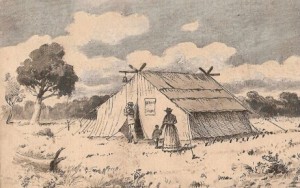
Thanks to Pat Grainger for this additional information.
References and further information
1 Meiers, A 2006 Fisher folk of Fishermans Bend Port Melbourne, Vic: Port Melbourne Historical and Preservation Society
2 Prison hulks, State Library of Victoria http://ergo.slv.vic.gov.au/explore-history/colonial-melbourne/convicts/prison-hulks [Accessed:7 January 2022]
3 Norgard, R J The Sailing Ship Success http://shipsuccess.blogspot.com/ [Accessed 7 January 2022]

